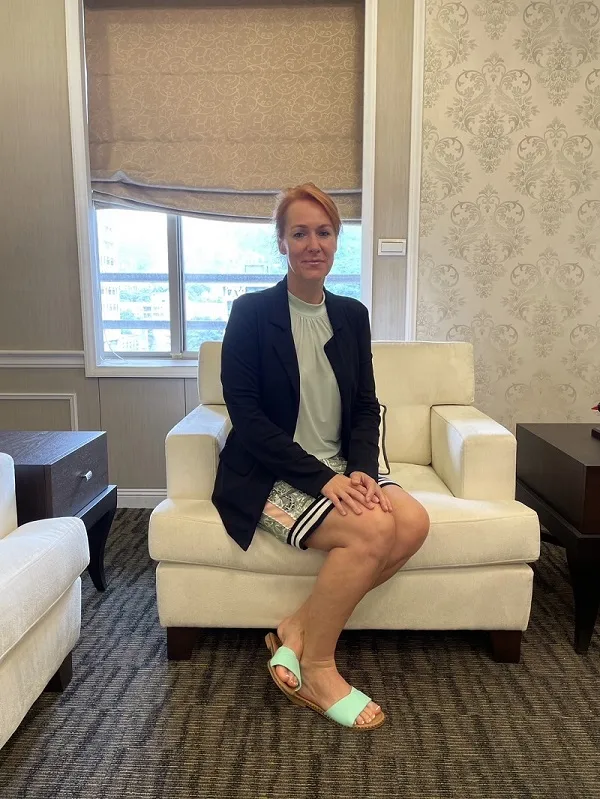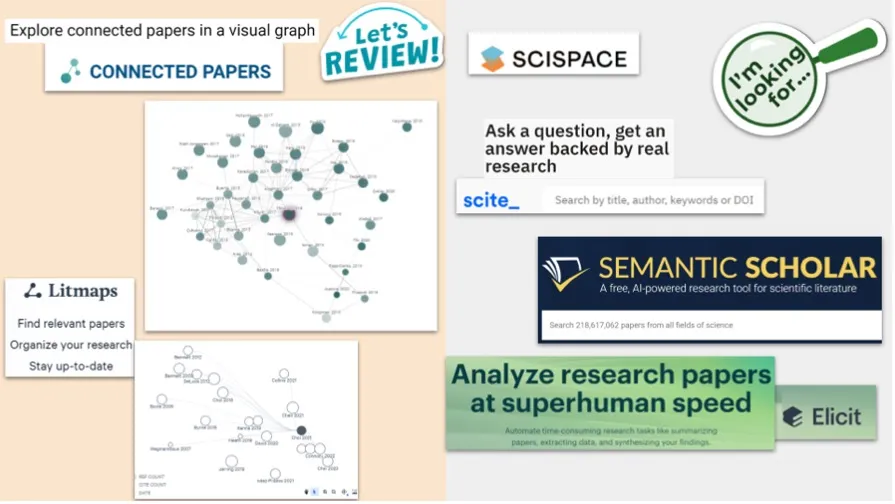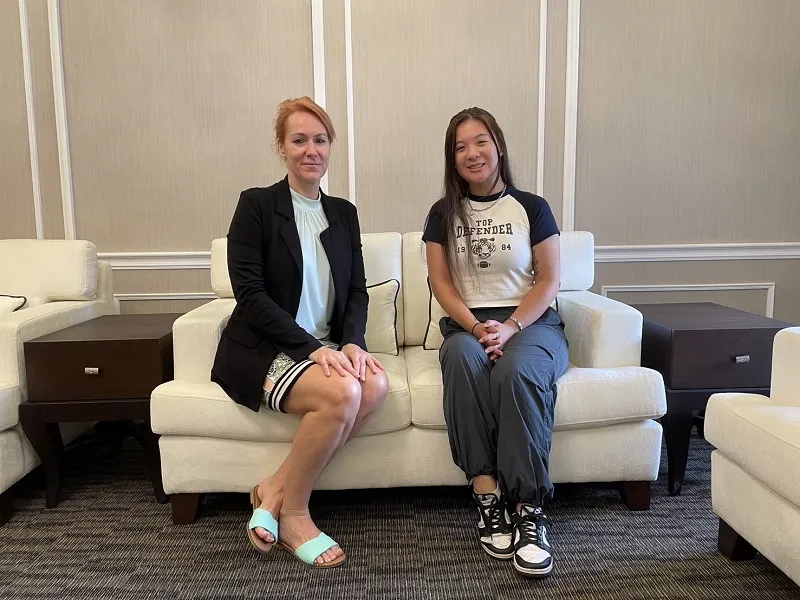By Angela Glowacki
NCCU had the pleasure of hosting Dr. Krisztina Domjan from May 27-31. Dr. Domjan is a professorial Lecturer from American University, specializing in English and Intercultural Communication. Over the course of five days, Dr. Domjan held open talks, training, and presentations sharing her expertise in cultural competency pedagogy and the future of AI in the classroom. On her final day at NCCU, we had the pleasure of speaking with her one on one.

▲Dr. Krisztina Domjan, a professorial Lecturer from American University
We began our conversation discussing how the development of AI technology has made research, teaching, and learning more convenient for both students and teachers. However, Dr. Domjan shared her thoughts on important considerations for university teachers and students. Most importantly, Dr. Domjan advocated for both teachers and students to gain AI literacy skills. She outlined three main approaches, understanding AI, using AI, and evaluating AI. “It is essential to learn how to selected the AI tools we need for our tasks,” Dr. Domjan said, “In the case of doing research, you can have a conversation with an AI chatbot and ask it to list a handful of scholars with the most cutting-edge research, or with a specific focus on a certain topic. However, because AI chatbots are limited, they have limited access to online sources. This is when the AI literacy skills are needed.”

▲AI Research tools recommended by Dr. Domjan (credit Krisztina Domjan)
Dr. Domjan encouraged university teachers to learn how to build AI tools into their workflow to reduce time spent on certain stages of the process. She shared a finding reporting that 82.4% of scientists found AI peer reviews more useful than some of the human reviews, suggesting that AI is reasonably adept at finding errors. She cautioned against sharing sensitive data with AI chatbots, instead utilizing it to receive feedback on the flow of an article, structure, and organization. Her advice to students was similar, also emphasizing not to rely too heavily on AI tools. A common misconception is that AI chatbots automatically produce quality work, when in reality this is not the case. Dr. Domjan joked about instances in her classroom when she saw the same ideas reproduced across various papers of students who used chatbots to help with their assignments. Students need to be aware that the AI chatbots, while useful for brainstorming, cannot replace the entire writing process entirely. With this, Dr. Domjan highlighted a key question students must ask themselves, “At what stage of the writing process or assignment creation is it ethical to use these tools?” Dr. Domjan advocated for transparency about AI usage, as well as flexibility from the students as their teachers will each have different expectations and levels of expertise about how much AI they will allow in class.
Advancements in AI technology have been widely incorporated in the hard sciences, however, fields such as the humanities and social sciences can also leverage these tools. Dr. Domjan highlighted how researchers could offload complex tasks like data mining to AI tools, or take part in providing insight towards the creation of new educational tech tools such as virtual tutors. She confesses that this is a largely understudied subject at the moment, but is hopeful about the potential for advancements and increased integration of AI tools in the humanities and social sciences. Above all, Dr. Domjan advocates for the creation of spaces to experiment and understand AI’s benefits and limitation. Hands-on experimentation, she argues, can build communities and inspire more usage.
After discussing AI in the classroom, we switched gears to address the unique cultural diversity at NCCU and ask Dr. Domjan her thoughts on the kind of mindsets administrative staff and teachers should possess in order to sustain an inclusive environment. She cited Dr. Darla Deardorff’s argument on how respect, openness, and curiosity/discovery are key attitudes needed to ensure success. Showing interest, Dr. Domjan continued, is incredibly important towards starting conversations. She also listed several skills that are valuable including; perspective-taking, observation, flexibility, interacting, and self-efficacy. “It is not enough to have good faith and good intentions,” Dr. Domjan warned, “an intercultural interaction also has to be successful and effective. Essentially what we need is a growth mindset: developing a more complex self-perception and perception of others. We see the world through our cultural glasses and that can be a barrier, so we have to make sure that our cultural glasses are at least bifocal or multi-focal.” Dr. Domjan understands that this process takes work and is a life-learning process in which understanding is gained from more frequent and intentional interactions.
We closed our discussion to talk more specifically about NCCU and how the university could promote interaction among students from different backgrounds. Dr. Domjan shared about work that she has done at her university creating co-curricular activities for her students. In a class she teaches called Complex Problems, Dr. Domjan has built a digital citizenship global exchange initiative in which students, both domestic and international, team up to discuss relevant questions regarding digital citizenship. Eventually, the teams prepare visuals and stations to support a robust exchange of information. This event has been successful in the many times that she has initiated and Dr. Domjan suggested similar activities be implemented in the classrooms at NCCU. Additionally, she acknowledged the importance of feedback mechanisms so students can share their experiences and voice concerns, as well as ask for help or support when needed. She brought up an interesting point about how many schools put pressure on international students to blend in and connect with locals, while the domestic students do not often receive the same pressure. Dr. Domjan advocated for more opportunities to learn about how to navigate intercultural communication be made available to domestic students. Lastly, she listed several other events universities can hold to celebrate their student body diversity such as potlucks, story circles, and community projects.

▲It was a pleasure speaking with Dr. Domjan and hearing her insight on AI technology and multicultural inclusivity on campus.
It was a pleasure speaking with Dr. Domjan and hearing her insight on AI technology and multicultural inclusivity on campus. Her suggestions and ideas are extremely valuable to both teachers and students alike. In particular, with the growth of AI technology, students and teachers can feel more encouraged to learn about how to responsibly leverage these tools to succeed in the classroom. Dr. Domjan’s resources and advice is extremely valuable in understanding where to start learning about how to use AI in the classroom. Lastly, her input and experience on fostering inclusive environments also reminds us how lucky we are to be part of such a diverse student body and be excited to continue to celebrate our differences.